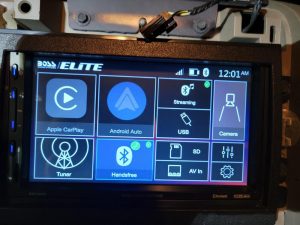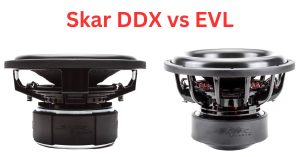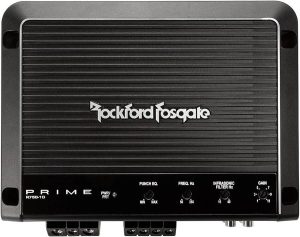When setting up your car audio system, choosing between a mono amplifier and a 2-channel amp can be confusing. Both serve different purposes and understanding their differences will help you build the perfect sound system for your needs.
Contents
- What Is a Mono Amplifier?
- What Is a 2-Channel Amplifier?
- Key Differences Between Mono and 2-Channel Amps
- When to Choose a Mono Amplifier
- When to Choose a 2-Channel Amplifier
- Can You Use a 2-Channel Amp for a Subwoofer?
- Can You Use a Mono Amp for Regular Speakers?
- Building a Complete System: Multiple Amps
- Choosing Based on Your Goals and Budget
- Installation Tips
- Final Thoughts: Making Your Decision
What Is a Mono Amplifier?
A mono amplifier, also called a monoblock amp, produces a single channel of audio output. These amplifiers are designed specifically to power subwoofers, focusing all their energy on reproducing low-frequency bass sounds. Since bass frequencies are non-directional, you don’t need stereo separation to enjoy them fully.
Mono amps excel at delivering the power needed for those deep, thumping bass notes that can make or break your audio experience. They’re built to handle the demands of subwoofers, which require significant power to move their larger cones and produce clean, distortion-free bass.
Most mono amps are Class D amplifiers, known for their efficiency. This design choice makes them ideal for powering energy-hungry subwoofers without draining your car’s electrical system.
What Is a 2-Channel Amplifier?
A 2-channel amplifier, as the name suggests, produces two channels of audio output – left and right. These amplifiers create the stereo sound experience we’re all familiar with, where different elements of the music come from different directions.
Two-channel amps are versatile components in your audio setup. They’re primarily used to power your main speakers (like component speakers or coaxial speakers), but they can also be bridged to function similar to a mono amp for powering a subwoofer.
Most 2-channel amps are Class AB designs, which offer a good balance between sound quality and efficiency. They’re not as efficient as Class D amps but generally provide cleaner sound reproduction across the full audio spectrum.
Key Differences Between Mono and 2-Channel Amps
Power Output and Configuration
Mono amplifiers typically deliver higher power output at lower impedances (usually 1 or 2 ohms). This makes them perfect for subwoofers, which benefit from this extra power to produce deep bass. A quality mono amp can easily output 500-1500 watts RMS at 2 ohms, giving your subwoofer the juice it needs to perform at its best.
Two-channel amplifiers usually run at higher impedances (4 ohms per channel) and deliver less power per channel than mono amps. A typical 2-channel amp might provide 75-150 watts RMS per channel at 4 ohms. While this is less raw power, it’s perfectly suited for driving full-range speakers that don’t require as much power as subwoofers.
Frequency Response
Mono amplifiers are designed with bass reproduction in mind. Many include a built-in low-pass filter that only allows low frequencies (typically below 80-100 Hz) to pass through to the subwoofer. This specialization makes them extremely efficient at what they do – delivering clean, powerful bass.
Two-channel amplifiers need to reproduce the full range of audible frequencies, from deep bass to crisp highs. They typically have a flat frequency response from around 20 Hz to 20 kHz, allowing them to accurately amplify all the nuances in your music across both channels.
Sound Stage and Imaging
Since mono amps produce just one channel of audio, they don’t create any stereo separation or imaging. This isn’t an issue for subwoofers since our ears can’t locate the source of low-frequency sounds anyway.
Two-channel amps create the stereo sound field that gives music its depth and dimensionality. They allow instruments and vocals to be positioned properly in the sound stage, creating a more immersive listening experience. This stereo imaging is crucial for accurately reproducing music as the artist intended.
Installation Flexibility
Mono amps are straightforward to install when powering subwoofers. You connect the amp to your head unit, then run a single set of speaker wires to your subwoofer. If you’re using multiple subwoofers, you can wire them in series or parallel to match the amp’s ideal impedance.
Two-channel amps offer more flexibility in your system design. You can use them to power:
- A pair of speakers (one channel per speaker)
- A single subwoofer (by bridging the two channels)
- Multiple speakers using passive crossovers
This versatility makes 2-channel amps popular for smaller systems or as part of larger, multi-amp setups.
When to Choose a Mono Amplifier
You should choose a mono amplifier when:
- You’re powering one or more subwoofers
- Bass performance is your top priority
- You need high power output at low impedances
- You’re building a system with separate amps for subs and speakers
- You want the most efficient power delivery for bass frequencies
Mono amps shine in dedicated subwoofer applications. If you’re adding a subwoofer to your system to enhance the low-end response that your main speakers can’t reproduce well, a mono amp is often the best choice.
For example, if you’ve installed a 12-inch subwoofer rated for 500 watts RMS, pairing it with a mono amp that delivers 500-600 watts RMS at the correct impedance will give you optimal performance. The mono amp will ensure your subwoofer gets the clean power it needs without wasting energy on frequencies the subwoofer can’t reproduce anyway.
When to Choose a 2-Channel Amplifier
You should choose a 2-channel amplifier when:
- You’re powering a pair of speakers
- You want true stereo sound reproduction
- You need an amp that can handle the full frequency range
- You’re working with limited space or budget and need versatility
- You might want to bridge the amp to power a subwoofer later
Two-channel amps are ideal for powering your main speakers, whether they’re component sets in the front doors or coaxial speakers in the rear deck. They deliver the balanced power these speakers need while maintaining the stereo separation essential for proper music reproduction.
If you’re building a basic system upgrade from your factory stereo, a good 2-channel amp powering your front speakers can dramatically improve your sound quality. Later, you could add a mono amp and subwoofer to complete your system.
Can You Use a 2-Channel Amp for a Subwoofer?
Yes, you can use a 2-channel amp to power a subwoofer by bridging the two channels. Bridging combines the power output of both channels into a single, more powerful channel. This effectively turns your 2-channel amp into a mono amp.
However, there are some considerations:
- Not all 2-channel amps can be bridged (check your manual)
- Bridged amps are less stable at very low impedances
- The power output may still be less than a dedicated mono amp
- You’ll need to use the amp’s built-in crossover to filter out high frequencies
While bridging works in a pinch, dedicated mono amps are engineered specifically for subwoofer duty and generally perform better in this role.
Can You Use a Mono Amp for Regular Speakers?
Technically, you could use a mono amp to power regular speakers, but it’s not recommended for several reasons:
- You’ll lose stereo separation completely
- Mono amps often have built-in low-pass filters that cut high frequencies
- The power output may be too high for standard speakers
- You’d be paying for power capabilities you don’t need
Regular speakers are designed to reproduce the full range of frequencies in stereo, so using a mono amp would severely limit your listening experience.
Building a Complete System: Multiple Amps
Many enthusiasts use both types of amps in their systems:
- 2-channel amp for front component speakers
- Another 2-channel amp for rear fill speakers
- Mono amp for the subwoofer(s)
This approach gives you the best of both worlds: clean, detailed stereo sound from your main speakers and powerful, distortion-free bass from your subwoofers.
When designing such a system, make sure to:
- Match the power ratings of your amps to your speakers and subwoofers
- Set appropriate crossover points to direct the right frequencies to each speaker
- Consider the total current draw on your vehicle’s electrical system
- Use proper gauge power wire to support all your amplifiers
Choosing Based on Your Goals and Budget
Your choice between mono and 2-channel amps ultimately depends on your goals and budget.
If you’re building your system in stages, start with a good 2-channel amp for your main speakers. This will give you the biggest immediate improvement in sound quality. Later, you can add a mono amp and subwoofer to fill in the bottom end.
If bass is your primary concern and you already have decent speakers running off your head unit, a mono amp powering a quality subwoofer might be your best first upgrade.
For those with larger budgets building complete systems from scratch, using separate amps for different duties often yields the best results. A mono amp for the subwoofer and a multi-channel amp for the other speakers gives you plenty of clean power where it’s needed most.
Installation Tips
Whichever amp type you choose, follow these installation best practices:
- Use proper gauge power wire based on your amp’s current requirements
- Install a suitable fuse near the battery
- Secure the amp in a location with adequate ventilation
- Use quality RCA cables and keep them away from power wires
- Set gains properly using a multimeter or oscilloscope (not by ear)
- Set crossovers appropriately for each speaker type
Proper installation ensures you’ll get the best performance and reliability from your amplifiers.
Final Thoughts: Making Your Decision
When deciding between a mono amp and a 2-channel amp, ask yourself:
- What speakers am I powering?
- Is bass my main priority?
- Do I need stereo separation?
- Will I be expanding my system later?
For subwoofers, a mono amp is almost always the better choice. For main speakers, a 2-channel (or multi-channel) amp will deliver the stereo sound you want.
Remember that the right amp isn’t necessarily the most powerful or the most expensive—it’s the one that matches your specific needs and works well with the other components in your system.
With the right amplifier choice, you’ll be well on your way to creating a car audio system that delivers the sound quality you’ve been dreaming of, whether that’s focused on crystal-clear vocals, detailed instrument separation, or earth-shaking bass that you can feel in your chest.






